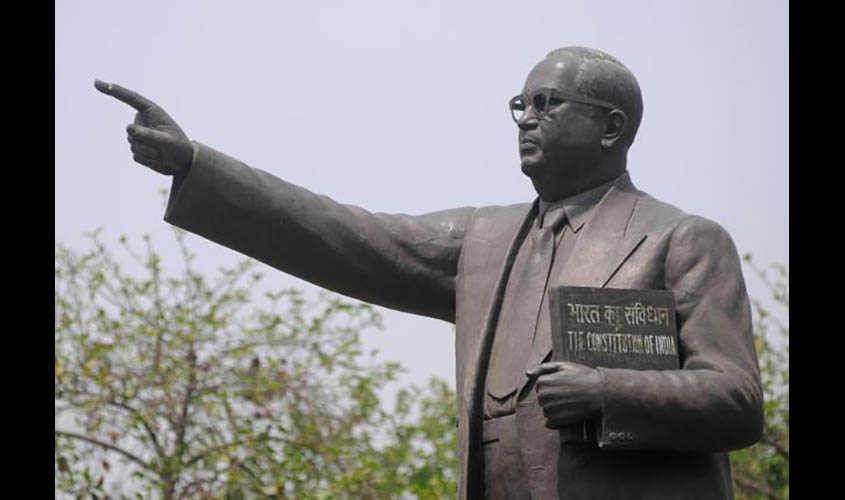The defiling of statues is particularly problematic as it contributes to a certain caste-driven political discourse.
Secularism and often a rose tinted picture of secularism as an inclusive, accommodating idea of the founders of the nation, evoke pride, nostalgia and longing for the lost golden era. The destruction of temples in the medieval period and especially under Aurangzeb was believed to have signalled the end of the “secular” regime of Akbar and the inauguration of bigotry under Aurangzeb.
Whether the temple desecration had more to do with state policy rather than religious fundamentalism meant nothing to many who argued that Aurangzeb abandoned the policies of his ancestors in favour of Islamisation. Statues of important political personalities, activists, reformers evoke the same sentiment across the world today. The destruction and bombing of the Bamiyan Buddhas in Afghanistan by the Taliban invoked similar a response. The painting or repainting of statues and buildings evokes mixed responses—from outright anger on the streets to meaningless discussions on news channels across the country. What is with statues and symbolism in India? Is it an India-only phenomenon? Of course not. Why are statues of B.R. Ambedkar, Shivaji, Buddha, Lenin, Periyar and MGR a matter of politics? Were they always political? If yes, how are statues relevant?
It is not difficult to guess why Mayawati spent thousands of crores on building the Rashtriya Dalit Prerna Sthals in major cities across UP, despite widespread criticism and allegations of corruption. The Sthals were intended to cement BSP and its ideology among the masses and push the question of “Dalit Prerna” or inspiration to the forefront of political discourse. More recently, the statue of Shivaji has become relevant at a time when farmers across Maharashtra are contemplating suicide or participating in jan andolans.
The Balasaheb Thackeray memorial has also got the green signal from the Maharashtra government at a time when the Shiv Sena and the ally in the state are at loggerheads.
The question arises as to why has the recent news of defiling of statues suddenly hit the headlines? There is no denying that the legacy of these icons are up for grabs and no political party wants to lose out in the race for claiming it. It is not surprising that such a trend comes at a time when political parties such as the BSP, Shiv Sena, AIADMK are facing a severe political crisis.
The Balasaheb memorial, like that of MGR and now Jayalalithaa, was intended to ensure that the political message of these icons was not forgotten and that the memorial would serve as a pilgrimage for party cadres. The strategy to claim statues is part of a larger project to claim relevance in the atmosphere of rising Dalit anger and disenchantment.
Of course, B.R. Ambedkar would have not liked a personality cult of this sort that these statues seem to promote. He would in fact loathe it. Statues of Ambedkar, Kanshi Ram, Buddha, Shivaji are part of a larger developing consciousness and metamorphosis that society, especially the poor, are experiencing. Even though new age technology, and free mobile data is an enabler, it has not been accompanied by a social revolution or a redistribution of power. Another case in point is the story of a Dalit bridegroom, who had to go from pillar to post to get permission to go on horseback to his impending marriage ceremony and the DM of his district provided him a map of the safe routes. Another Dalit groom was forced to wear a helmet fearing backlash for riding on a horseback. The death of the raped girl’s father in custody in Unnao in UP is another example of a mini-pogrom in the country.
The defiling of statues is particularly problematic as it contributes to a certain caste-driven political discourse, ignoring the real challenges that the country faces. It is responsible for pushing the issue of statues, identity and caste politics to the forefront, rather than dousing the fire. It is also responsible for cementing caste identities, rather than realising Ambedkar’s dream of ending caste in Indian society. Statues and their political relevance have evolved over time with the felling of certain statues signalling the end of certain regimes or the fading relevance of political ideologies. It is the beginning of the downfall of normal public discourse in the country. It’s time we woke up. Politicisation of statues and individual apathy have one common consequence; moving away from the real question and losing out an opportunity to address tensions in society. Let’s not lose the opportunity as a nation.

